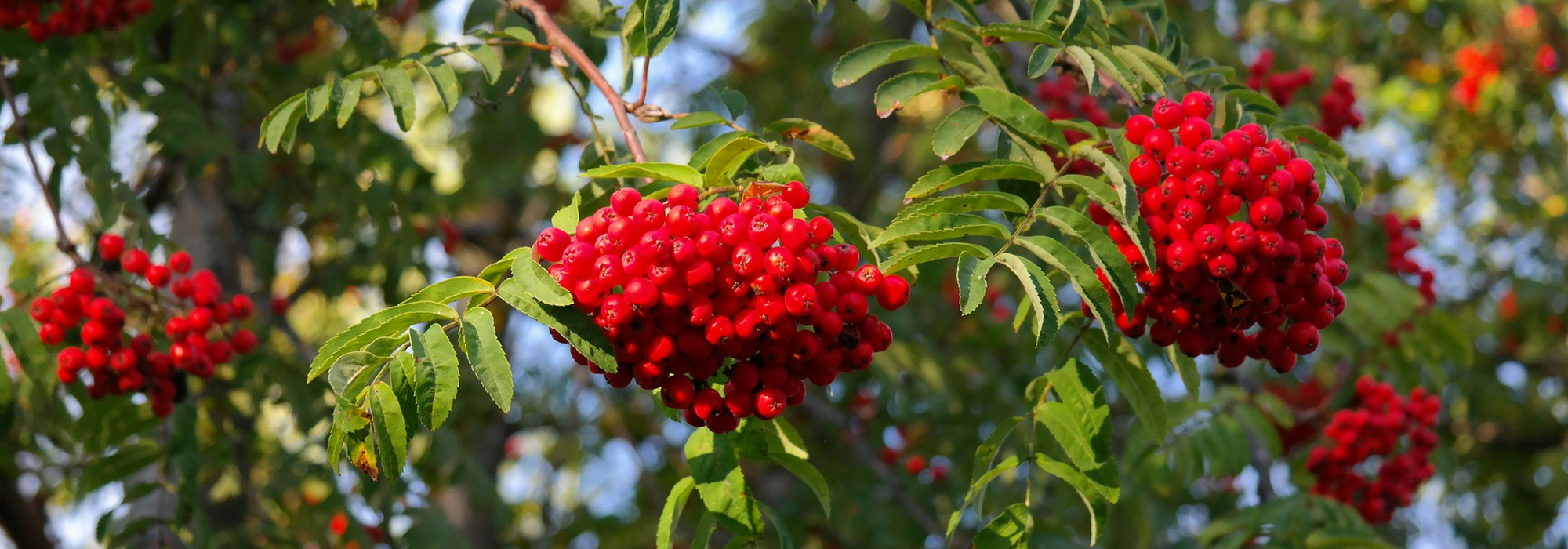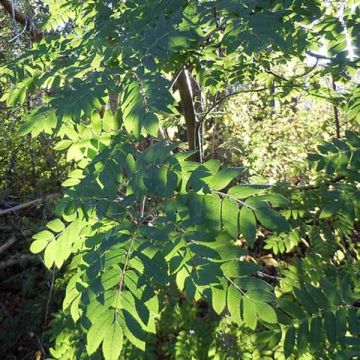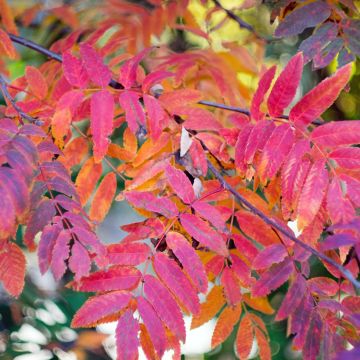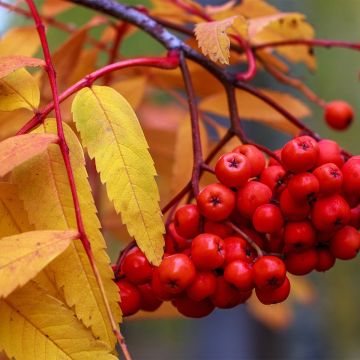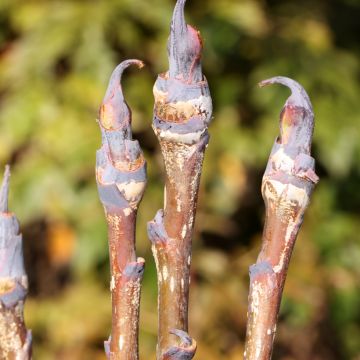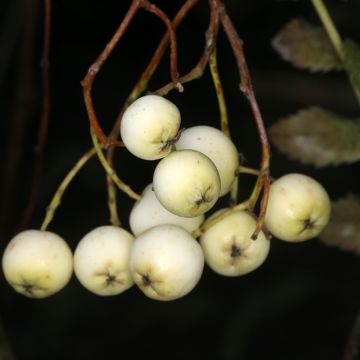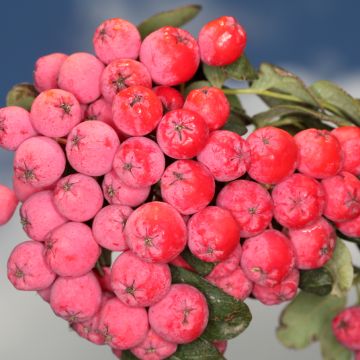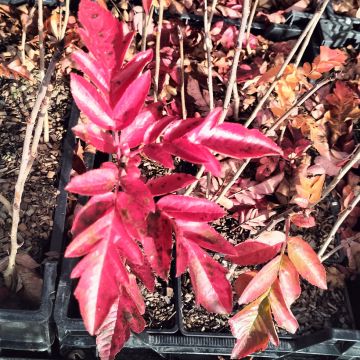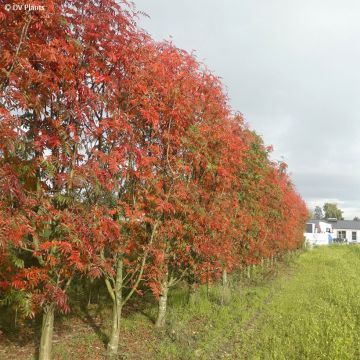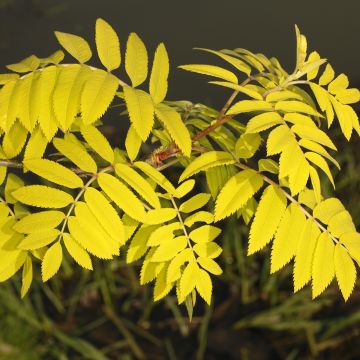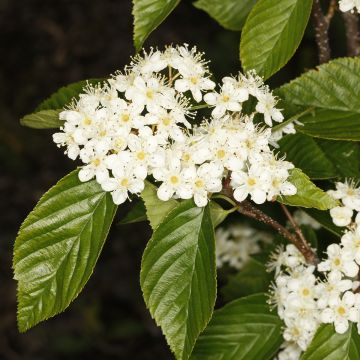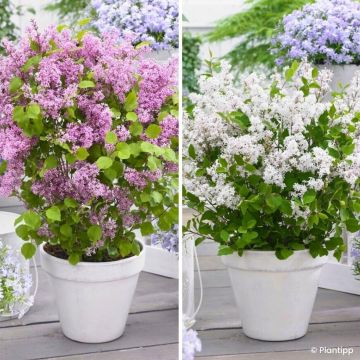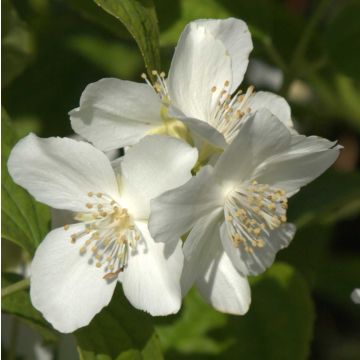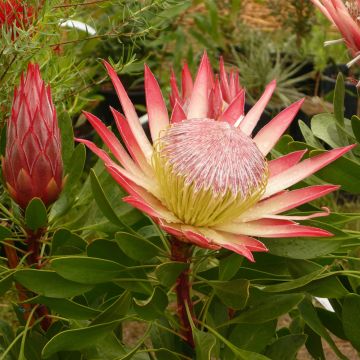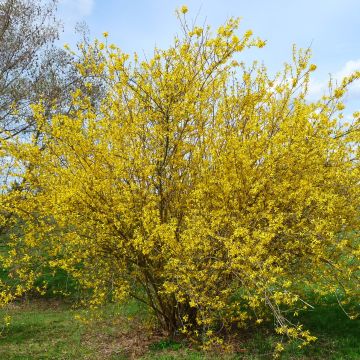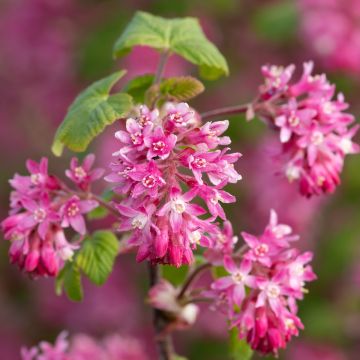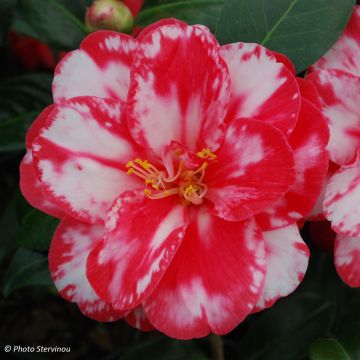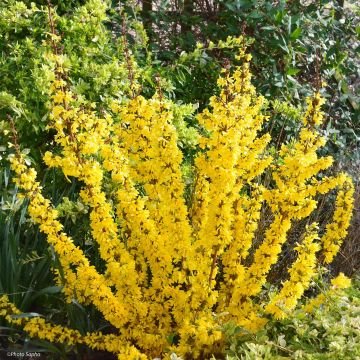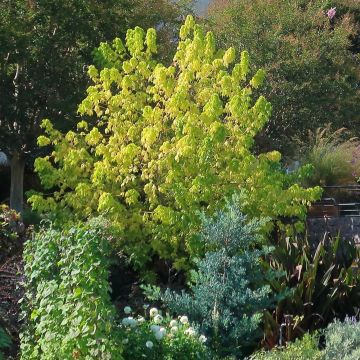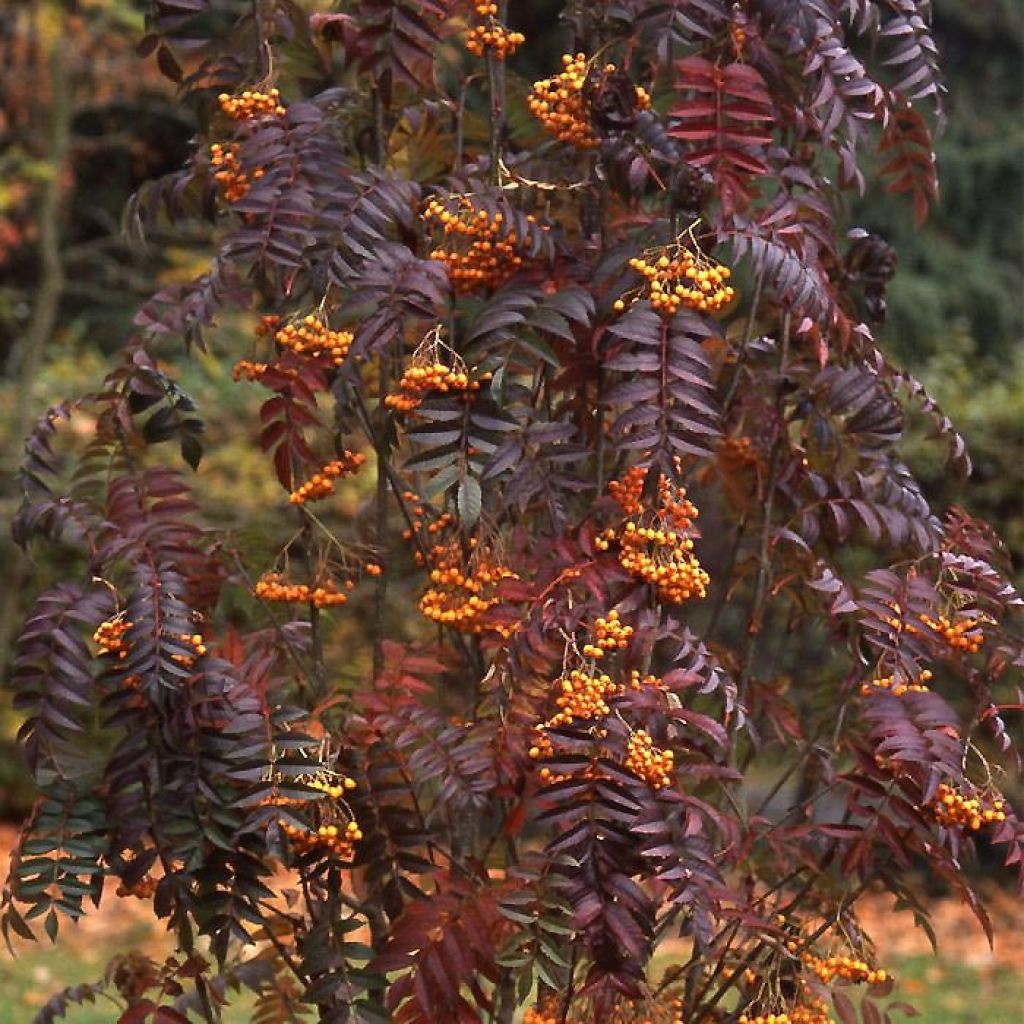

Sorbus aucuparia Autumn Spire
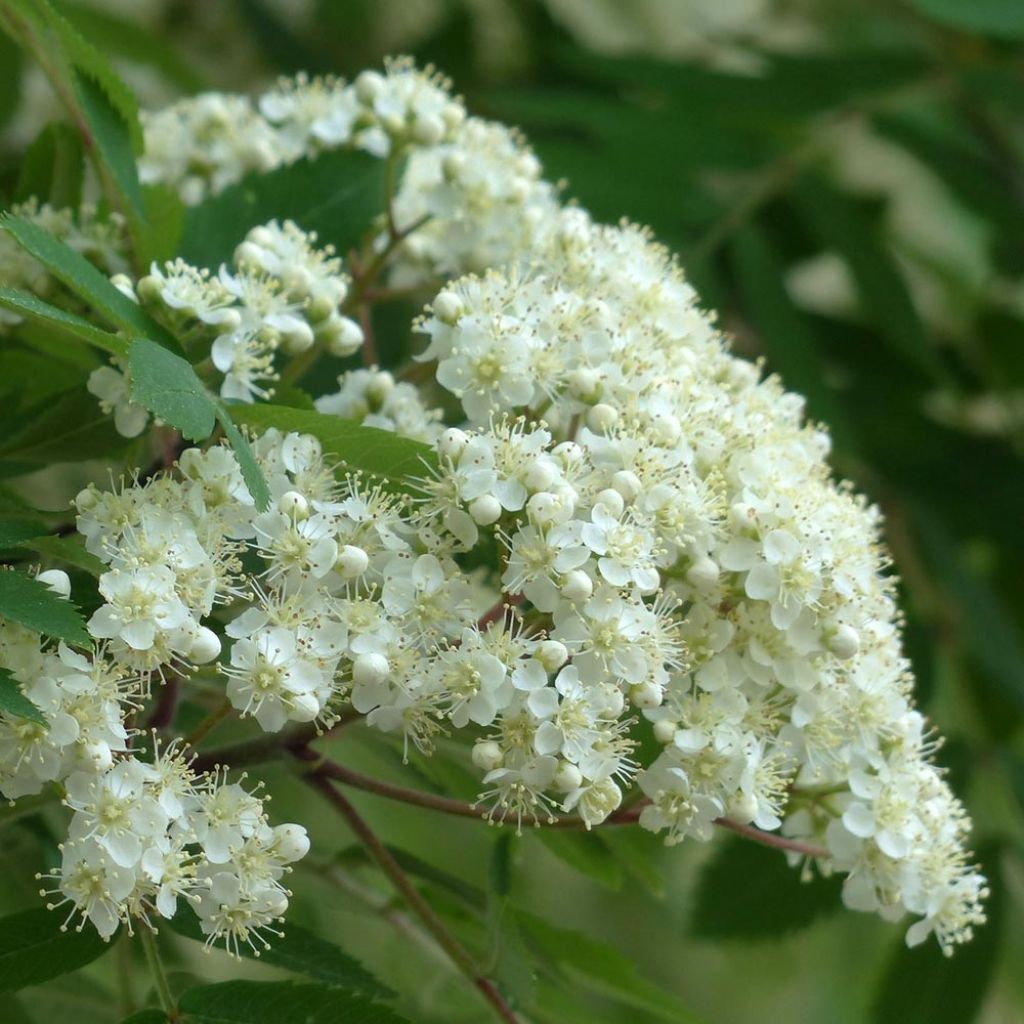

Sorbus aucuparia Autumn Spire
Sorbus aucuparia Autumn Spire
Sorbus aucuparia Autumn Spire
European mountain Ash, Mountain Ash, Quickbeam, Rantry, Rowan, Ranty, Rowanberry
Disappointed! Mediocre and puny, barely rooted and the graft is really not nice!!! When planting, I felt like I had a 9x9 pot repotted into a 4/5 liter pot just before delivery.
Alexandre, 09/09/2025
Special offer!
Receive a €20 voucher for any order over €90 (excluding delivery costs, credit notes, and plastic-free options)!
1- Add your favorite plants to your cart.
2- Once you have reached €90, confirm your order (you can even choose the delivery date!).
3- As soon as your order is shipped, you will receive an email containing your voucher code, valid for 3 months (90 days).
Your voucher is unique and can only be used once, for any order with a minimum value of €20, excluding delivery costs.
Can be combined with other current offers, non-divisible and non-refundable.
Home or relay delivery (depending on size and destination)
Schedule delivery date,
and select date in basket
This plant carries a 24 months recovery warranty
More information
We guarantee the quality of our plants for a full growing cycle, and will replace at our expense any plant that fails to recover under normal climatic and planting conditions.

Does this plant fit my garden?
Set up your Plantfit profile →
Description
Sorbus aucuparia Autumn Spire is a small ornamental tree that enhances the garden from spring to autumn. Its beautiful slender silhouette is adorned with deciduous compound foliage, dark green turning to purple-red in autumn, passing through the most flamboyant shades. From May to June, it blooms with large silky white corymbs, followed by a profusion of small decorative yellow-orange berries, which remain on the tree for a long time. With its compact, columnar habit, it is a versatile cultivar suitable for planting individually, in hedges, or in alignment in small spaces. Extremely tolerant of soil types and exposure, it just needs to be avoided stagnant humidity and given some light. It can even tolerate poor, dry, acidic, or calcareous soils.
Sorbus aucuparia Autumn Spire is a primarily ornamental cultivar of Sorbus aucuparia or rowan tree. It is an extremely hardy species, quite common from Europe to Asia and rare in the Mediterranean, thriving in rather humid and temperate climates. It can live up to 150 years and reach a height of about ten metres. A light-loving species, it is often found at the edge of woods growing on light soils. It is an undemanding tree that tolerates all soils, even acidic or calcareous ones, as long as they are well-drained. Preferring coolness, it can nevertheless withstand occasional drought once established. Sorbus aucuparia Autumn Spire has a compact, columnar habit and reaches only 4 metres (13ft) in height and 1 metre (3ft 4in) in width after 20 years. It blooms from May to June with a profusion of typical single white flowers of the Rosaceae family, gathered in 12cm (4.7in) diameter corymbs. The 6-8mm (0.2 - 0.3in) flowers consist of 5 petals and 15 to 20 quite long stamens, far exceeding the corollas. At the end of summer, they give way to decorative light orange to yellow fruits, which persist until winter. The 1cm (0.4in) diameter berries are a delight for birds, especially thrushes, who love them. The delicate foliage of the rowan tree is deciduous and odd-pinnate, consisting of 9-15 oblong, lanceolate, finely dentate leaflets. They are glabrous and dark green on the upper side and pale, slightly pubescent underneath. In autumn, the leaves, which are 10 to 20cm (3.9 - 7.9in) long, turn purple-red, passing through orange and fiery red. The bark of Sorbus aucuparia is smooth and light grey in color. It becomes covered with white lenticels on old trees. It emits an unpleasant odour.
It is a decorative tree from spring to autumn and, due to its small size, it is increasingly used as an alignment tree, individually, or in informal hedges in parks and gardens. The small dimensions and narrow habit of the Autumn Spire variety make it suitable for even the smallest gardens, even when planted near entrances or facades. Use it to create medium-sized informal hedges by associating it with other wild, fruit-bearing, and honey-bearing species such as elderberries, hornbeams, privets, and dogwoods. It is a delightful species for aligning small garden paths or in flower beds accompanied by other species with fresh soil and purple, red, and acid green foliage (hazelnuts, Mexican orange, barberries, lady's mantle) and white and red flowering plants such as Astilbes, knotweeds, and Rodgersias.
Sorbus aucuparia Autumn Spire in pictures
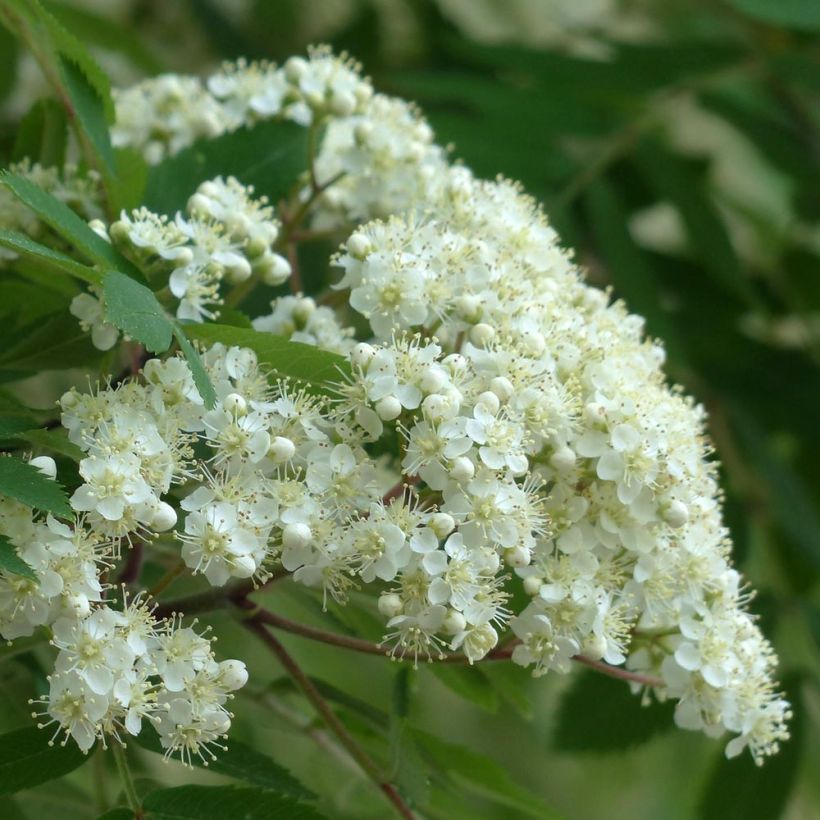

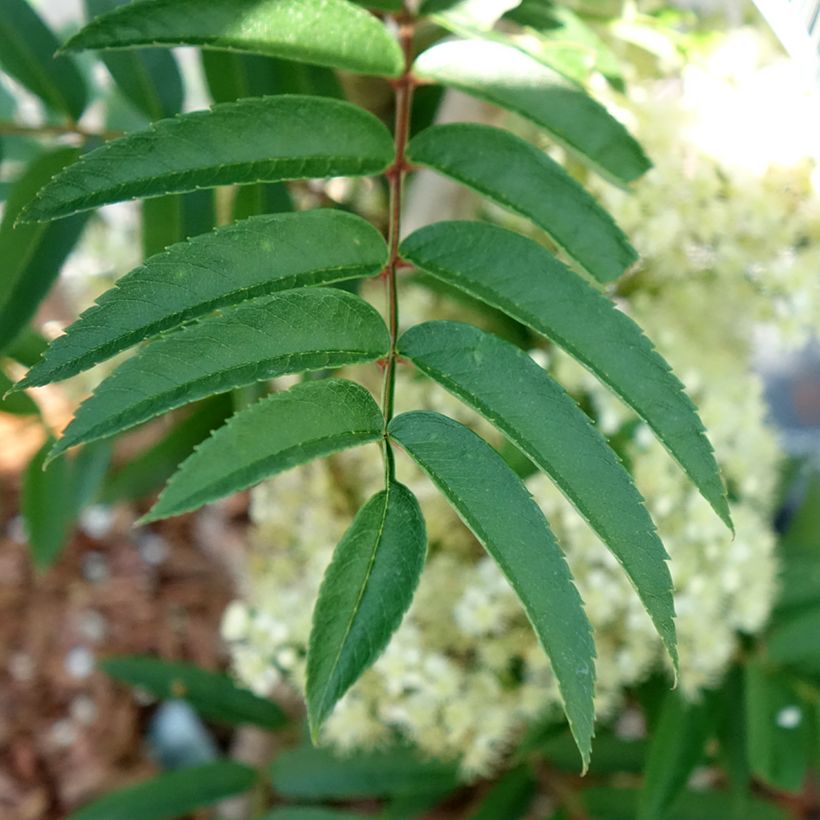

Plant habit
Flowering
Foliage
Botanical data
Sorbus
aucuparia
Autumn Spire
Rosaceae
European mountain Ash, Mountain Ash, Quickbeam, Rantry, Rowan, Ranty, Rowanberry
Cultivar or hybrid
Other Sorbus - Mountain Ash
View all →Planting and care
Sorbus aucuparia Autumn Spire thrives in the sun. It can be placed in partial shade for part of the day. It is a tree that does not like too much bright light and high temperatures. Place it sheltered from prevailing winds to prevent uprooting. It appreciates a rich, moist soil but requires a well-drained location, not too wet. It tolerates short periods of drought quite well. Water it during very dry periods, especially during the first few years.
Planting period
Intended location
Care
Planting & care advice
-
, onOrder confirmed
Reply from on Promesse de fleurs
Similar products
Haven't found what you were looking for?
Hardiness is the lowest winter temperature a plant can endure without suffering serious damage or even dying. However, hardiness is affected by location (a sheltered area, such as a patio), protection (winter cover) and soil type (hardiness is improved by well-drained soil).

Photo Sharing Terms & Conditions
In order to encourage gardeners to interact and share their experiences, Promesse de fleurs offers various media enabling content to be uploaded onto its Site - in particular via the ‘Photo sharing’ module.
The User agrees to refrain from:
- Posting any content that is illegal, prejudicial, insulting, racist, inciteful to hatred, revisionist, contrary to public decency, that infringes on privacy or on the privacy rights of third parties, in particular the publicity rights of persons and goods, intellectual property rights, or the right to privacy.
- Submitting content on behalf of a third party;
- Impersonate the identity of a third party and/or publish any personal information about a third party;
In general, the User undertakes to refrain from any unethical behaviour.
All Content (in particular text, comments, files, images, photos, videos, creative works, etc.), which may be subject to property or intellectual property rights, image or other private rights, shall remain the property of the User, subject to the limited rights granted by the terms of the licence granted by Promesse de fleurs as stated below. Users are at liberty to publish or not to publish such Content on the Site, notably via the ‘Photo Sharing’ facility, and accept that this Content shall be made public and freely accessible, notably on the Internet.
Users further acknowledge, undertake to have ,and guarantee that they hold all necessary rights and permissions to publish such material on the Site, in particular with regard to the legislation in force pertaining to any privacy, property, intellectual property, image, or contractual rights, or rights of any other nature. By publishing such Content on the Site, Users acknowledge accepting full liability as publishers of the Content within the meaning of the law, and grant Promesse de fleurs, free of charge, an inclusive, worldwide licence for the said Content for the entire duration of its publication, including all reproduction, representation, up/downloading, displaying, performing, transmission, and storage rights.
Users also grant permission for their name to be linked to the Content and accept that this link may not always be made available.
By engaging in posting material, Users consent to their Content becoming automatically accessible on the Internet, in particular on other sites and/or blogs and/or web pages of the Promesse de fleurs site, including in particular social pages and the Promesse de fleurs catalogue.
Users may secure the removal of entrusted content free of charge by issuing a simple request via our contact form.
The flowering period indicated on our website applies to countries and regions located in USDA zone 8 (France, the United Kingdom, Ireland, the Netherlands, etc.)
It will vary according to where you live:
- In zones 9 to 10 (Italy, Spain, Greece, etc.), flowering will occur about 2 to 4 weeks earlier.
- In zones 6 to 7 (Germany, Poland, Slovenia, and lower mountainous regions), flowering will be delayed by 2 to 3 weeks.
- In zone 5 (Central Europe, Scandinavia), blooming will be delayed by 3 to 5 weeks.
In temperate climates, pruning of spring-flowering shrubs (forsythia, spireas, etc.) should be done just after flowering.
Pruning of summer-flowering shrubs (Indian Lilac, Perovskia, etc.) can be done in winter or spring.
In cold regions as well as with frost-sensitive plants, avoid pruning too early when severe frosts may still occur.
The planting period indicated on our website applies to countries and regions located in USDA zone 8 (France, United Kingdom, Ireland, Netherlands).
It will vary according to where you live:
- In Mediterranean zones (Marseille, Madrid, Milan, etc.), autumn and winter are the best planting periods.
- In continental zones (Strasbourg, Munich, Vienna, etc.), delay planting by 2 to 3 weeks in spring and bring it forward by 2 to 4 weeks in autumn.
- In mountainous regions (the Alps, Pyrenees, Carpathians, etc.), it is best to plant in late spring (May-June) or late summer (August-September).
The harvesting period indicated on our website applies to countries and regions in USDA zone 8 (France, England, Ireland, the Netherlands).
In colder areas (Scandinavia, Poland, Austria...) fruit and vegetable harvests are likely to be delayed by 3-4 weeks.
In warmer areas (Italy, Spain, Greece, etc.), harvesting will probably take place earlier, depending on weather conditions.
The sowing periods indicated on our website apply to countries and regions within USDA Zone 8 (France, UK, Ireland, Netherlands).
In colder areas (Scandinavia, Poland, Austria...), delay any outdoor sowing by 3-4 weeks, or sow under glass.
In warmer climes (Italy, Spain, Greece, etc.), bring outdoor sowing forward by a few weeks.






























